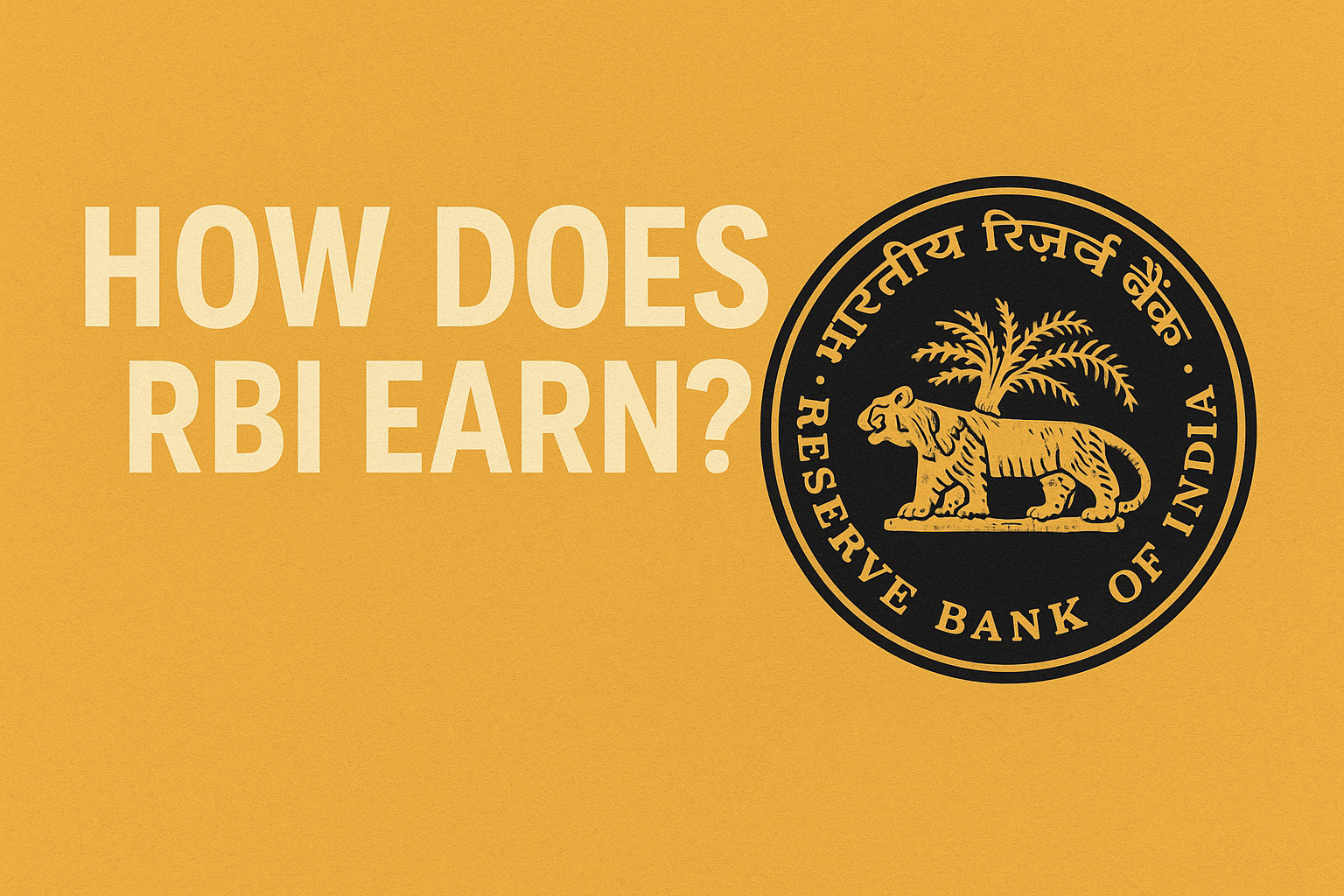WHY IN NEWS?
Reserve Bank of India (RBI) has transferred a dividend of 2.69 lakh crores to the government for the financial year 2024-25 marking a 50% increase from the ₹2.1 lakh crore distributed in the previous fiscal year. The RBI is a not-for-profit organization then how did it make such huge profits to transfer this huge dividend to the government?
SOURCES OF RBI'S INCOME?
The Reserve Bank of India's (RBI) surplus primarily originates from its core operations, including interest earnings on foreign assets, gains from foreign exchange transactions, and income from domestic securities. Let's look at multiple sources
- Seigniorage : Seigniorage is a term for the profits that the RBI makes by printing currency. RBI prints ₹100 (e.g. cost = ₹3). It gives that ₹100 to a bank, which deposits it with RBI in return for ₹100 worth of government securities. RBI earns interest on that ₹100. The public holds the ₹100 note without expecting any return. The difference in earnings and cost is seigniorage. Know more on Seigniorage. Click here
- Interest Income from Foreign Assets : RBI holds a large portion of India’s foreign exchange reserves in the form of foreign government bonds, mainly U.S. Treasuries. It earns interest income on these bonds. This is one of the largest sources of RBI’s surplus.
- Purchase and sale of government securities : RBI holds Government of India securities (G-Secs) and earns interest on them. It also earns interest from lending to banks (via repo operations, MSF, etc.) and from its Liquidity Adjustment Facility (LAF). Government securities are debt instruments issued by the central and state governments to finance their budgets. When the RBI buys these securities, it injects money into the economy, increasing liquidity. Conversely, when it sells these securities, it absorbs money from the system, reducing liquidity. The difference between the purchase and sale prices allows the RBI to generate income.
- Forex Operations (Gains from Currency Movements) : When RBI buys/sells foreign currencies in the forex market to manage the rupee's exchange rate, it can earn profits due to exchange rate fluctuations. For example, a depreciating rupee can increase the rupee-value of RBI’s foreign holdings. It buys dollars when it is cheap such as at ₹81 and sells when dollars become costly, for example at ₹83. Buying and selling of foreign currency is known as forex trading. In 2022-23 RBI made over ₹1 lakh crores in forex trades.
- Revaluation Gains : RBI revalues its gold and foreign currency reserves at the current market rate. If gold prices or foreign currency values rise, RBI records mark-to-market gains. These are notional gains but add to the surplus when realized.
- Fees and Other Income such as Income from the fees on banking services it provides (like currency management, bank settlements). Penalties on banks. Management fees from handling government securities.
- Giving loans to the commercial Banks : RBI provides short-term loans to commercial banks. The interest charged by RBI on these loans generates income for the RBI.
- Banking services : The RBI also provides banking services to the central and state governments, including holding their accounts, managing their cash flows, and facilitating the issuance and redemption of government bonds. The fees charged for these services contribute to the RBI's income.
RBI'S DEDUCTIONS : RBI sets aside a part of its earnings for:
- Contingency Fund (CF)
- Asset Development Fund (ADF)
After deducting these, the net surplus is transferred to the Government of India.
Example (FY 2024-25): RBI transferred a record ₹2.69 lakh crore to the government.
The RBI's surplus serves as a significant non-tax revenue source for the government, aiding in fiscal management and funding public expenditures.


Comments
Write Comment